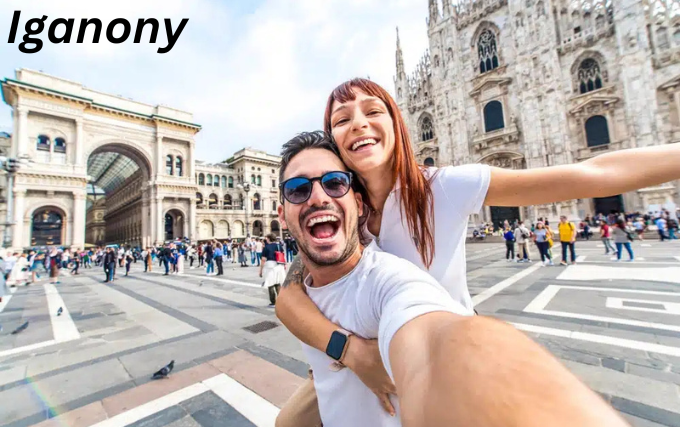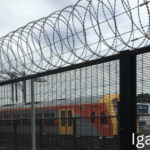In a world more connected than ever, the idea of forming meaningful bonds while on the move is no longer far-fetched. Whether you’re backpacking across continents, exploring cities solo, or attending group retreats, travel often opens unexpected doors—not just to new landscapes, but to people, cultures, and moments that can shift your perspective forever.
While we often associate travel with sightseeing and relaxation, it can also serve as a powerful catalyst for genuine human connection. But what makes these interactions truly lasting? Is it simply about being in the right place at the right time, or are there deeper psychological and social factors at play?
Let’s explore the key elements that shape our ability to form meaningful relationships—romantic or not—while traveling.
Openness and Intentions
The first factor that shapes any travel connection is your mindset. Are you genuinely open to meeting new people, or do you prefer to stay in your own space? Some travelers are eager to connect, while others focus solely on solitude or logistics.
Openness to experience—a core personality trait—plays a critical role. It reflects a person’s willingness to engage with unfamiliar ideas, cultures, and interactions. Travelers high in openness tend to embrace spontaneity, enjoy storytelling, and thrive in situations where emotional or intellectual exchange is possible. This mindset doesn’t just make connections possible—it makes them deeper and more fulfilling.
The Type of Travel
How you travel can influence the kinds of interactions you experience. Solo travel often presents more organic opportunities for meeting locals or fellow travelers, whether it’s at a café, hostel, or during transit. With no familiar company around, you’re more likely to initiate or accept social invitations.
On the other hand, group travel can both help and hinder connection. While you’re with others by default, the structure of a group tour might reduce your chances of meeting people outside the group. Still, some travelers form lifelong friendships with group members through shared experiences.
Ultimately, whether you’re traveling solo or with a group, the potential for human connection exists—the dynamics just differ. Solo travelers seek independence and personal discovery, while group travelers find bonding through collective memory-making.
Timing and Circumstances
Connection also depends on the context of your life when you travel. Are you in a phase of transition? Are you seeking answers, clarity, or escape? People going through change or growth tend to form deeper relationships while on the road.
Even smaller situational details matter. Having free time to converse, fewer digital distractions, or being in places where open dialogue is encouraged—such as train journeys or walking tours—can help conversations flow more naturally.
The emotional readiness of both people matters. Sometimes, two travelers meet but aren’t in a space to open up, which limits the potential for connection. Timing, in this sense, is both internal and external.
Willingness to Make an Effort
Traveling offers moments of connection, but sustaining them takes real effort. Whether it’s keeping in touch after parting ways, sending thoughtful messages, or scheduling future meetups, consistency is key.
Some travel friendships fade quickly; others evolve into mentorships, collaborations, or even lifelong bonds. Often, people underestimate how commitment—not just compatibility—sustains those ties.
In fact, studies on long-distance interaction show how consistent communication preserves closeness. Phone or video chats, intentional messages, and setting expectations can maintain emotional ties over time. Much like in romantic partnerships, the same strategies that contribute to long distance relationship success also help nurture deep platonic friendships formed while traveling.
Duration of the Trip
A short weekend getaway may not provide enough time for genuine bonding. However, as travel behavior shifts, more people are carving out time for deeper, more immersive experiences. In 2025, it’s increasingly common to take 1-3 international trips and 1-3 domestic trips throughout the year. According to American Express, travelers are also opting for longer stays—between a week and 12 days—which provides ample opportunity for forming relationships beyond surface-level interactions.
Extended trips allow for repeated meetings, shared routines, and stronger emotional familiarity. They also give travelers time to settle into a place and experience it more authentically, which often invites more meaningful connection with people—locals and fellow explorers alike.
Cultural Compatibility and Curiosity
Meeting people from different backgrounds is one of the most enriching aspects of travel—but it can come with challenges. Differences in language, values, or social customs may initially feel like barriers. But they can also be gateways—if approached with openness and curiosity.
It’s not about agreeing on everything—it’s about learning to see the world through someone else’s lens. Travelers who take the time to understand others’ customs and respect them are more likely to build lasting cross-cultural connections.
Genuine connection happens not despite differences, but through a shared effort to appreciate and learn from them.
Chance and Chemistry
Sometimes, the most powerful connections happen by accident—a conversation sparked during a delay, or a shared laugh over a local misunderstanding. These moments are unpredictable but impactful.
Chemistry isn’t limited to romance. It’s about mutual comfort, shared values, or an easy rhythm of communication. Travel places us in unfamiliar settings, making us more present and open. In such a state, we’re more attuned to the people around us—and that increases the odds of connecting on a meaningful level.
Conclusion: Traveling With Connection in Mind
So, can meaningful human connections be made while traveling? Absolutely. Travel gives us a unique opportunity to step outside of routine and into authenticity. Whether it’s a spontaneous conversation, a cultural exchange, or a friendship that spans years, the road has a way of bringing people together who might never have crossed paths otherwise.
The key lies in openness, intention, and a willingness to make an effort. It also helps to stay curious and respectful in every encounter. In a fast-paced world, travel slows us down just enough to look someone in the eyes, share a story, and feel seen—even briefly.
Whether you’re navigating ancient streets or remote landscapes, keep your heart open. You never know who you might meet—and how they might shape your journey.







